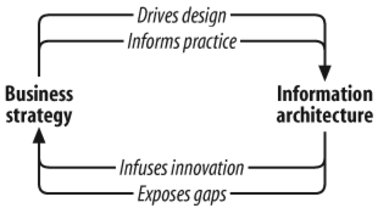Chapter 18. Business Strategy
| In strategy, surprise becomes more feasible the closer it occurs to the tactical realm. Carl von Clausewitz On War, 1832
What is business strategy doing in a book about information architecture? Do they have anything in common? After all, we didn't have any business strategy courses in our library and information science programs, and it's safe to say there are very few information architecture courses in the MBA curriculum. In truth, these two fields have existed independently and in relative ignorance of each other heretofore. This historical isolation is about to change. As the Internet permeates our society, managers and executives are slowly recognizing the mission-critical nature of their web sites and intranets, and this awareness is inevitably followed by a realization that information architecture is a key ingredient for success. Once they've seen the light, there's no going back. Managers will no longer leave information architects to play alone in the sandbox. They'll jump in and start playing, too, whether we like it or not. The good news is they'll bring some toys of their own to share, and if we look at this as an opportunity rather than a threat, we'll learn a lot about the relationship between strategy and architecture along the way. In practice, information architecture and business strategy should have a symbiotic relationship. It's obvious that the structure of a web site should align with the goals and strategy of the business. So, business strategy (often called "business rules") drives information architecture. What's less obvious is that the communication should go both ways. The process of information architecture design exposes gaps and inconsistencies in business strategy. Smart organizations make use of the feedback loop shown in Figure 18-1. Figure 18-1. The feedback loop of business strategy and information architecture On a more theoretical level, we believe the emerging discipline of information architecture has much to learn from the established field of business strategy. This is not an accidental match-up; the two fields have much in common. Both suffer from a high degree of ambiguity and fuzziness. They're intangible and don't lend themselves to concrete, quantitative return on investment analysis. Also, both fields must embrace and influence the whole organization to be successful. Information architects and business strategists can't afford to work in ivory towers or be limited by narrow departmental perspectives. And finally, information architecture, along with the umbrella disciplines of experience design and knowledge management, creates new opportunities and challenges for business strategy innovation. As the Internet continues to blow gales of creative destruction[*] through our industries, firms that see technology as their salvation will die. Success will belong to those who understand how to combine technology, strategy, and structure in keeping with their unique position in the marketplace. Information architecture will play a role in this vital and relentless search for competitive advantage.
|
EAN: 2147483647
Pages: 194